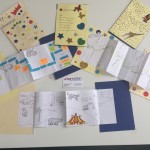At Urban Vision Enterprise CIC these are all words we aim to achieve or understand and include in our urban space discovery projects, but what does this mean? How do spaces in our community and wider locale contribute to our attachment, identity and sense of belonging?
As we all journey, physically, emotionally and socially through our day ask yourself: “What are our landmarks, what is our scale, what are our relationships with place and how would you illustrate those?”
As a planner and urban designer facilitating discussion and interaction through creative engagement is at the heart of all our work. Memory maps are one such example. Through memory mapping we often ask our students at high school and primary to create a memory map of their journey ‘home to school’ this is a great gage of perception, scale and importance. Yes we supply colourful stickers by the bucket load and funky directional post-it notes but what our students produce is a succinct urban guide to their environment prioritising space, location and landmarks.
This method began with a trial whilst working in Handsworth, Birmingham during my Urban Design studies. I queried a student on why ‘KFC’ was in terms of scale in their memory map about 300% larger than any other landmark shown on their plan, even home. The answer simply “it’s my favourite place to eat and you can meet you friends there”.
One simple strip of A3 paper is our memory canvas, students are encouraged to map their journey. By limiting the size of the paper it forces students to rationalise the information they want to show. Through a process of remembering the journey, we discuss the narrative that accompanies the map. I have found this an interesting method to discover a snapshot of individual understanding of where they are and how they relate to place.
I am now trying to translate this methodology into the preparation of many neighbourhood plans during the consultation phases. This has enabled us to observe and document the importance of space, how we prioritise and identify potential uses. However space is different things to different people. This is a constant challenge as built environment practitioners and this is just one of many methods in a large toolkit.
Below are some examples of the memory maps that have been created through various projects. I wanted to share this idea with you as it was inspired by some fantastic artists who we work with and often challenge to help us enable communities to discover home or a community place.
By Hannah Barter
Director, Urban Vision CIC

